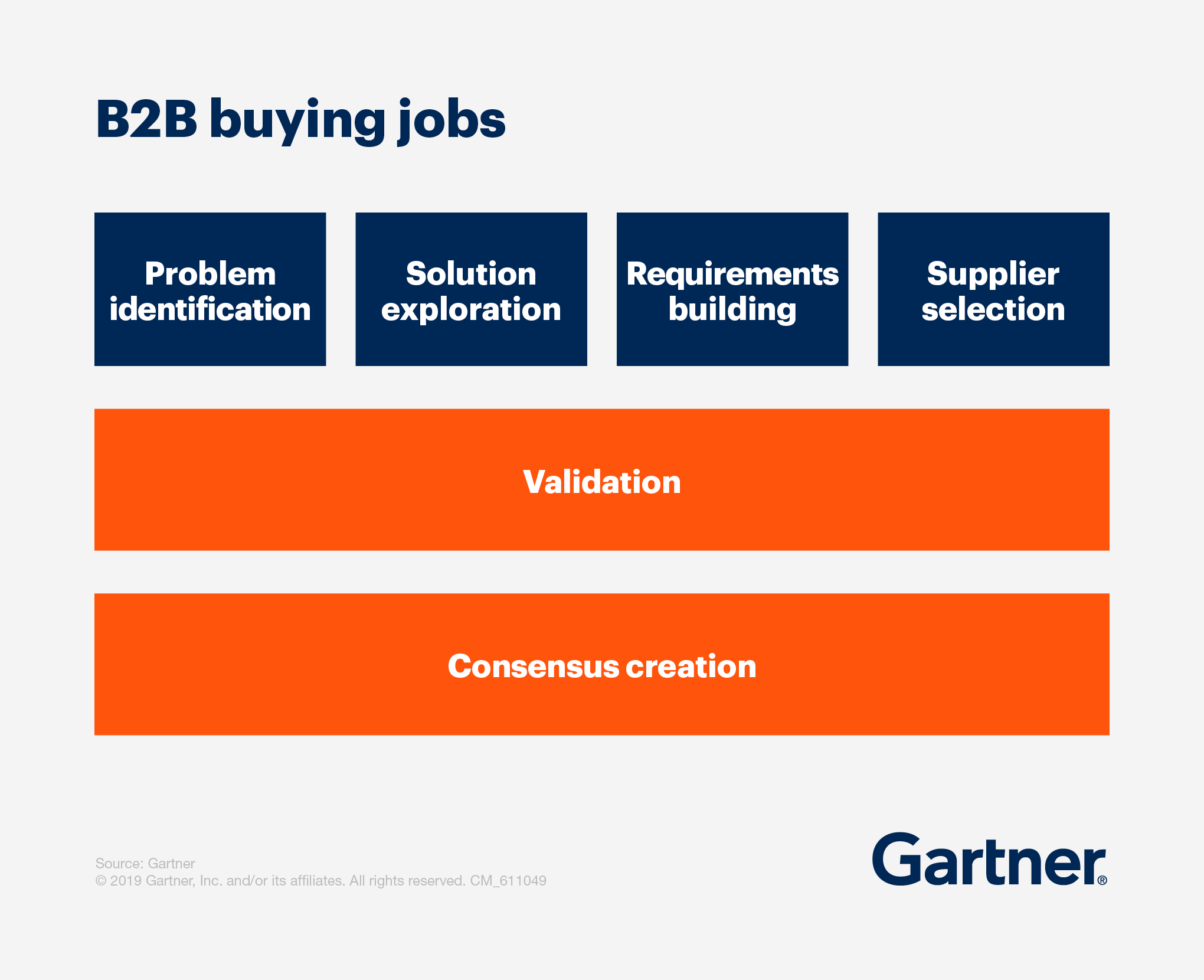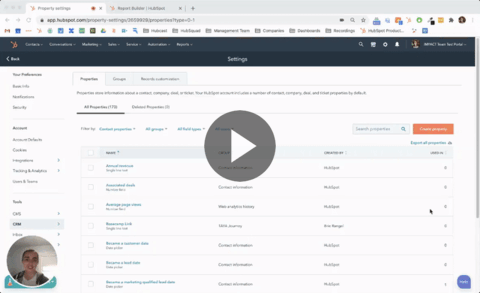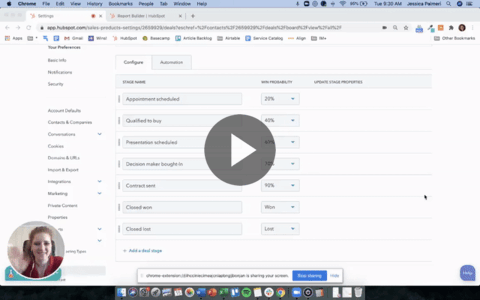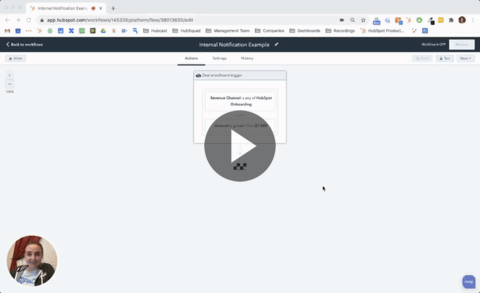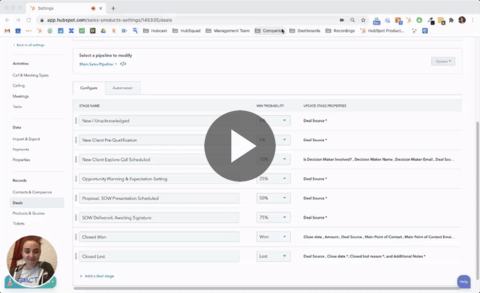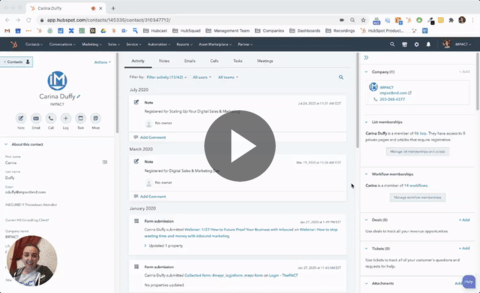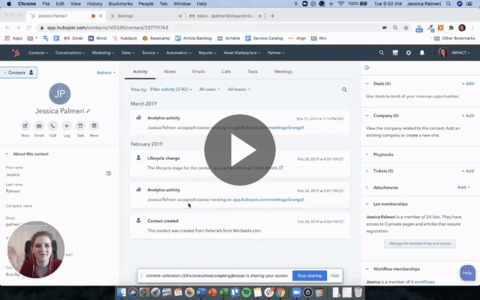Marketing Strategies
What Shifts in Product Demand Mean for SEO
Posted by SabrinaBomberger
If you’re working in e-commerce through the COVID-19 crisis, you’ve likely noticed some wild shifts in the way your products are viewed and consumed by the public. After all, the needs of the entire world have changed in some capacity. It makes sense that purchasing habits have, too.
This shift in demand might require an equal shift in your marketing strategy. As an SEO, you need to make sure that you understand the new demands on your product in the given market, and ensure any on-site changes are SEO-friendly.
These strategies apply not only in the midst of our current pandemic, but also during any rapid or unexpected change in product demand.
E-commerce sites are facing two very different scenarios
With my own e-commerce clients, and as a consumer myself, I’ve noticed two ways that the COVID-19 outbreak is affecting product demand:
1. Your product is suddenly a hot commodity and demand has skyrocketed.
Sporting goods, home office supplies, and backyard furniture have all exploded since social distancing guidelines were imposed.
Roller skates, for example, are having a moment. Lots of people (including me!) have turned to skating and other outdoor activities for recreation. And with many brick-and-mortar stores closed, we’re buying these items online.
[Alt text: Google Trends chart for the keyword “roller skates”, which shows relatively steady numbers until a sharp increase in March 2020]
2. Your product is suddenly less relevant to the market and demand has drastically decreased.
Items like apparel, shoes, and luxury goods are all experiencing this to a degree. Engagement rings — being expensive and tied to a major life event — saw a sharp decrease in search volume in March 2020.

[Alt text: Google Trends chart for the keyword “engagement rings”, which sees relatively steady numbers until a sharp decrease in March 2020.]
These examples fall on opposite ends of a demand spectrum. Take time to analyze your traffic and consider which side of the spectrum your product lands on, so you can make the best of your situation as an SEO and marketer.
If your product is more in demand than ever
You may think it’s all positive when your product is in a season of high demand, especially during an economic downturn. But an unexpected uptick in demand can cause a host of marketing and SEO challenges to contend with. Here are some of the most important considerations to take into account if your products are newly booming.
Manage temporary out-of-stock products
Disrupted supply chains paired with a demand increase is a recipe for an out-of-stock disaster, at least temporarily. If this isn’t something your site typically deals with, you may be the one who has to figure out what to do with these product pages while you wait for a restock.
Dr. Pete has a fantastic article about the best way to handle temporary out-of-stock that you should check out if this is your scenario.
Spoiler alert: please don’t 404 these pages if the product will be restocked. Also, make sure that you’re providing helpful information about where users can find the product in stores, or how they can be notified when it’s back in stock online.
Address common user questions
Given the extreme circumstances we’re collectively experiencing, customers need to be reassured about any contingencies they’ll face when ordering your product. It is critically important to address these pain points with on-site messaging during a sudden uptick in order volume for two reasons:
- You are likely unprepared for a massive influx of customer service calls. Even if you are prepared, you should do what you can to spare your customer service reps!
- Many customers don’t want to reach out to customer service to get a basic question answered. If they can’t find the information quickly on your site, they’re more likely to find another site to take their money.
If you don’t know what your customers are asking about, there are a few ways to find out:
- Talk to your customer service reps. They speak with your customers every day, and likely have answered the same questions over and over again. These are the questions to address on-site.
- Mine your chat logs for repeat questions.
- See what customers are asking about on social media — check your linked and unlinked mentions!
- Address anything you know to be a current concern: are there shipping delays? Back ups with your warehouse? Let people know about it up front to save yourself from angry customer messages later.
You can respond to these questions in several different ways on your site. Adding banners, pop-ups, and even prominently displaying your FAQ page are all options. Just make sure your message is easy to find without detracting from important product details.
Moxi Skates provides a great example of this strategy in action. On every product page, they include a “COVID Questions” tab to address changes in operations due to the pandemic. They also have a message directly under the “Add to Cart” button telling users how long they can expect to wait for their skates.
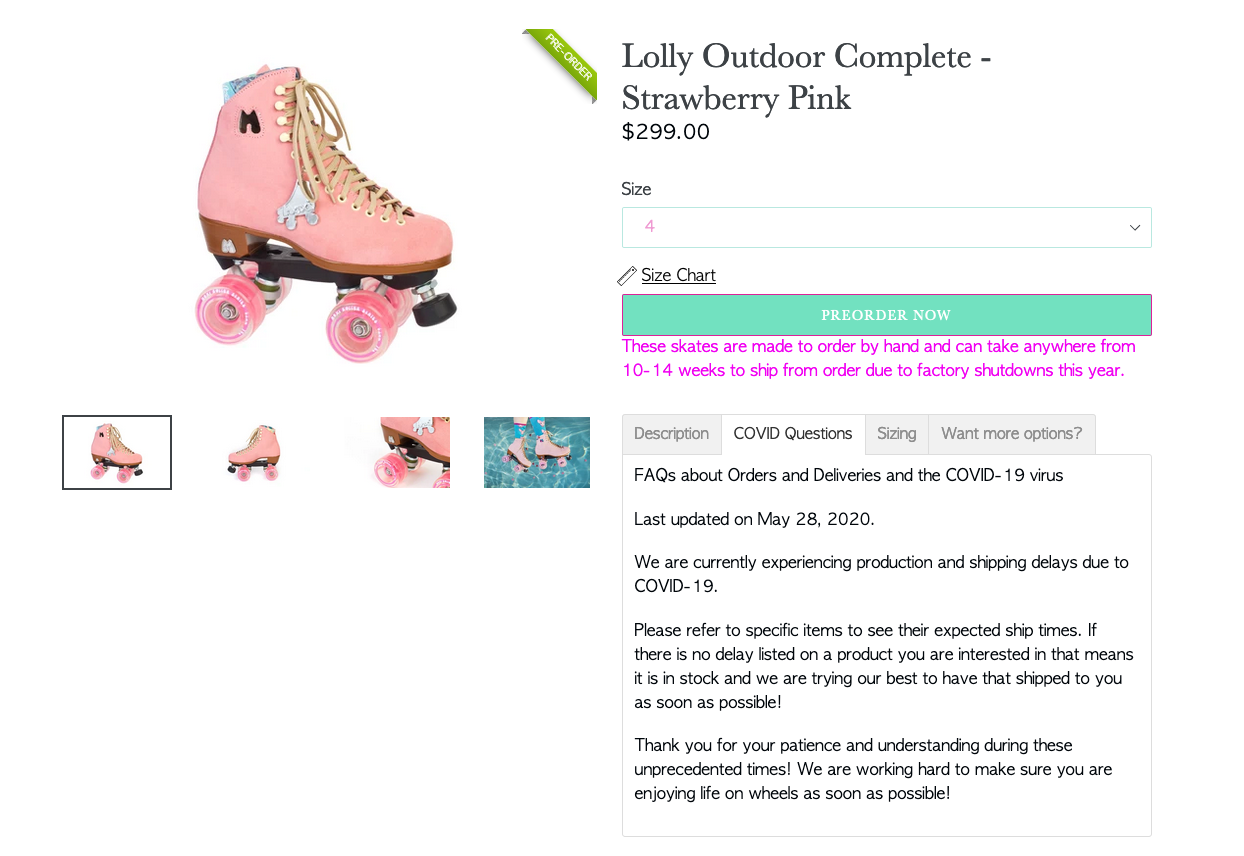
[Alt text: A product page from Moxi Skates that includes a “COVID Questions” tab, describing what customers need to know about the current shipping status of the product.]
Meet your users where they are
If your product is suddenly popular because of a lifestyle change for your customer (such as working from a home office instead of in-office), you could test new language and imagery to keep your products relevant in their new setting.
Vari makes desks and other office furniture, including popular standing desks. Before the pandemic, their homepage featured only in-office business imagery. Now, they prominently feature desk solutions for home learning and work-from-home. This didn’t replace their office-focused messaging, but supplemented it in a useful way.
Notice there’s no overdone “in these trying times” or “now more than ever” language. Rather they’re speaking directly to this newly popular use for their product.
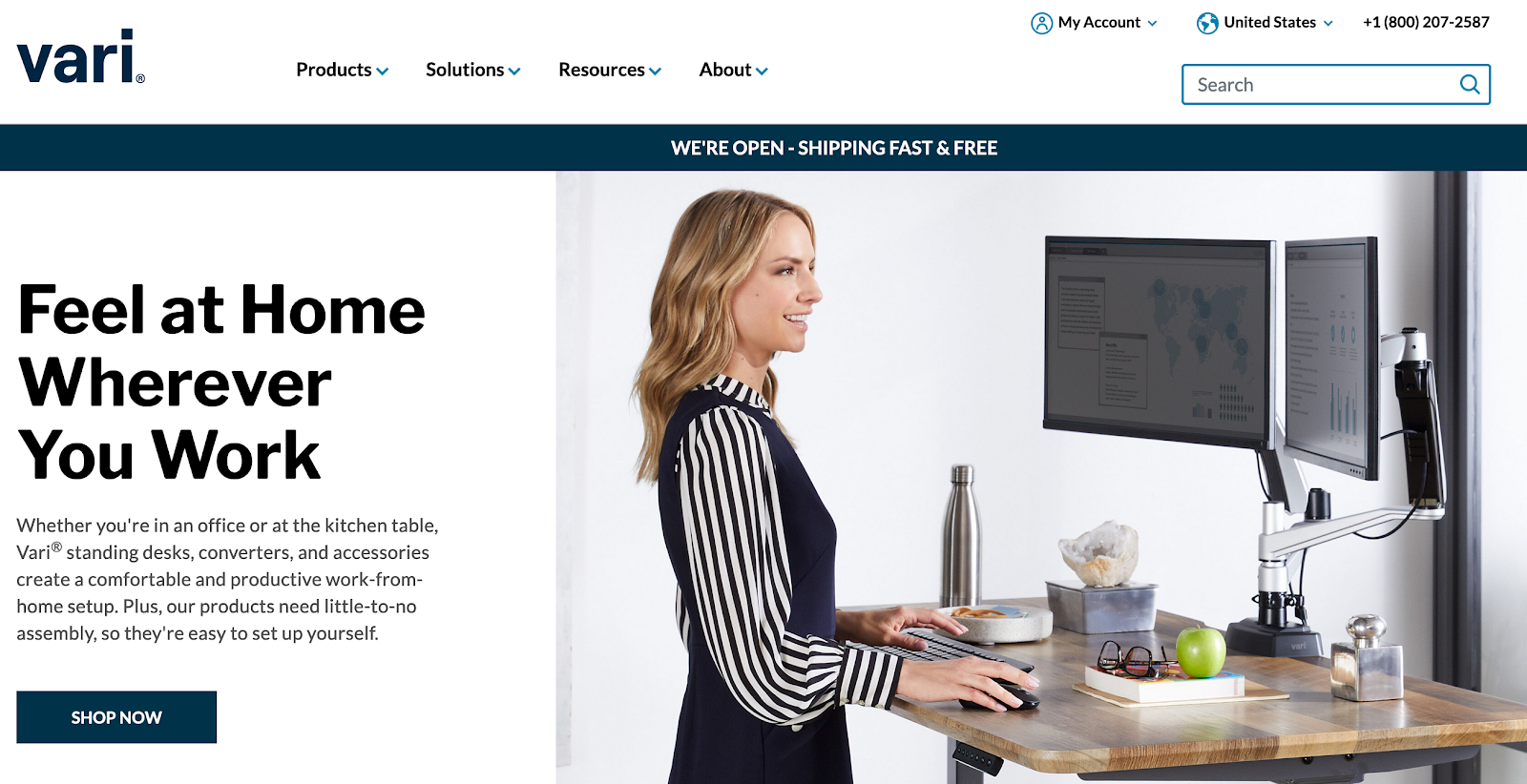
[Alt text: A screen shot from Vari’s homepage that pictures a woman working at a desk. The main text says “Feel at Home Wherever You Work.”]
Find opportunities to create new indexed pages
With the advent of new concepts comes the opportunity for new indexed pages — both on the content and product side.
Five months ago, “social distance supplies” had no monthly search volume, and likely didn’t mean much to any of us. Yet now it’s the language we use to describe products like hand sanitizer, cleaning wipes, masks, and gloves.
Sure you could call those items “safety supplies”, “cleaning supplies”, or “PPE”, and you might still want to do that, but there’s a new opportunity to use “social distancing supplies” as another relevant semantic grouping that may capture additional search traffic.
Concepts like this can be slow to show promise in keyword research tools, but it’s important as SEOs to be on top of the language users are actually using to refer to new concepts related to our products.
Here are a few ways to spot trends before keyword research tools do:
- Monitor internal site search for any novel concepts or terms.
- Spend time where your users do — are they in parent groups on Facebook talking about pandemic pods and distance learning? If so, they were likely there discussing these concepts before they were trending in search tools.
- Stay connected to the news and watch for anything that might be relevant to your products.
This “At-Home Learning” category page from Target pulls together products including desks and chairs, art supplies, computers, and more in one indexed page, providing a one-stop-shop for new homeschooling parents. At the time of this writing, this page is ranking in position six for the “at home learning” keyword in the United States, which is quite impressive for an e-commerce page in an information-dominated SERP.
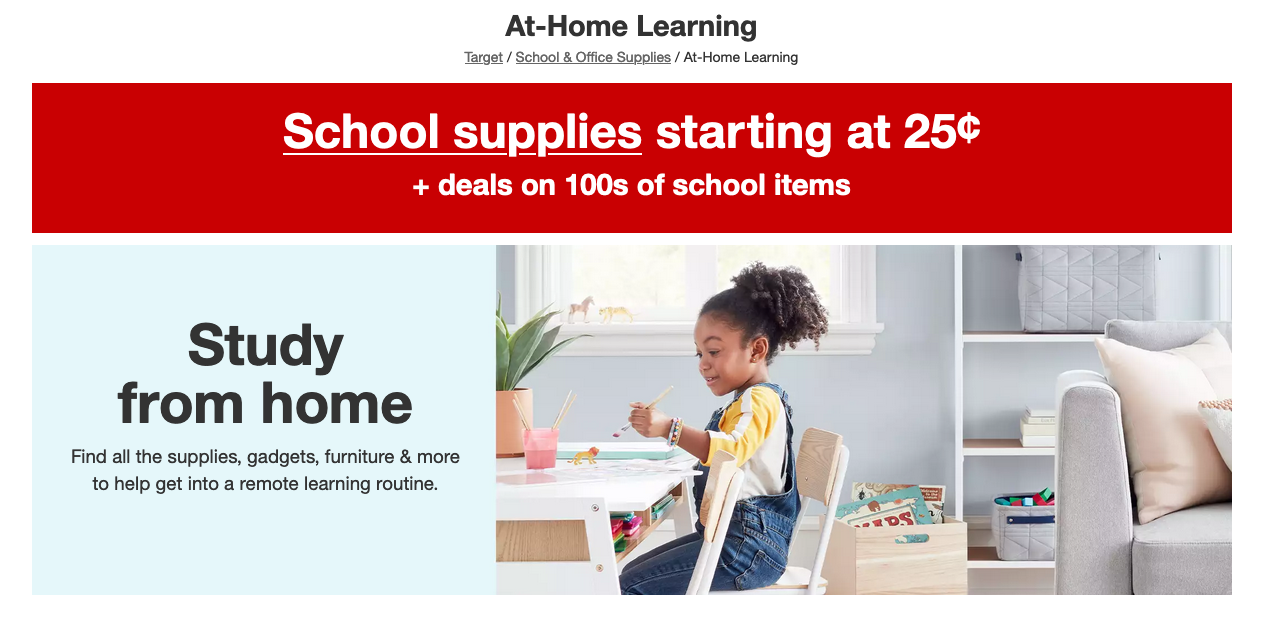
[Alt text: A screenshot of Target’s At-Home Learning category. The main text says “Study from home - Find all the supplies, gadgets, furniture & more to help get into a remote learning routine.”]
If your product demand has suddenly decreased
Now we need to talk about the other side of the coin — what if demand for your product has drastically decreased?
Luxury goods, apparel, and anything that includes a “try in-store, buy online” model are struggling.
If you work in marketing at an e-commerce site that’s suffering through the COVID-19 crisis, it may feel like there’s nothing you can do. While you can’t change the market, there are still practical ways you can help your company make the most of the situation.
Highlight your most relevant products
Although some clothing retailers are struggling, many of them have leaned into the stay-at-home situation by creating a loungewear category and prominently featuring it in their marketing. Though loungewear isn’t the primary focus for many of these businesses, nor the most expensive clothing category, it’s more likely to be purchased while customers are staying at home.
Check out Google Trends for “loungewear” — you can see why retailers have heavily promoted this category for the last several months.
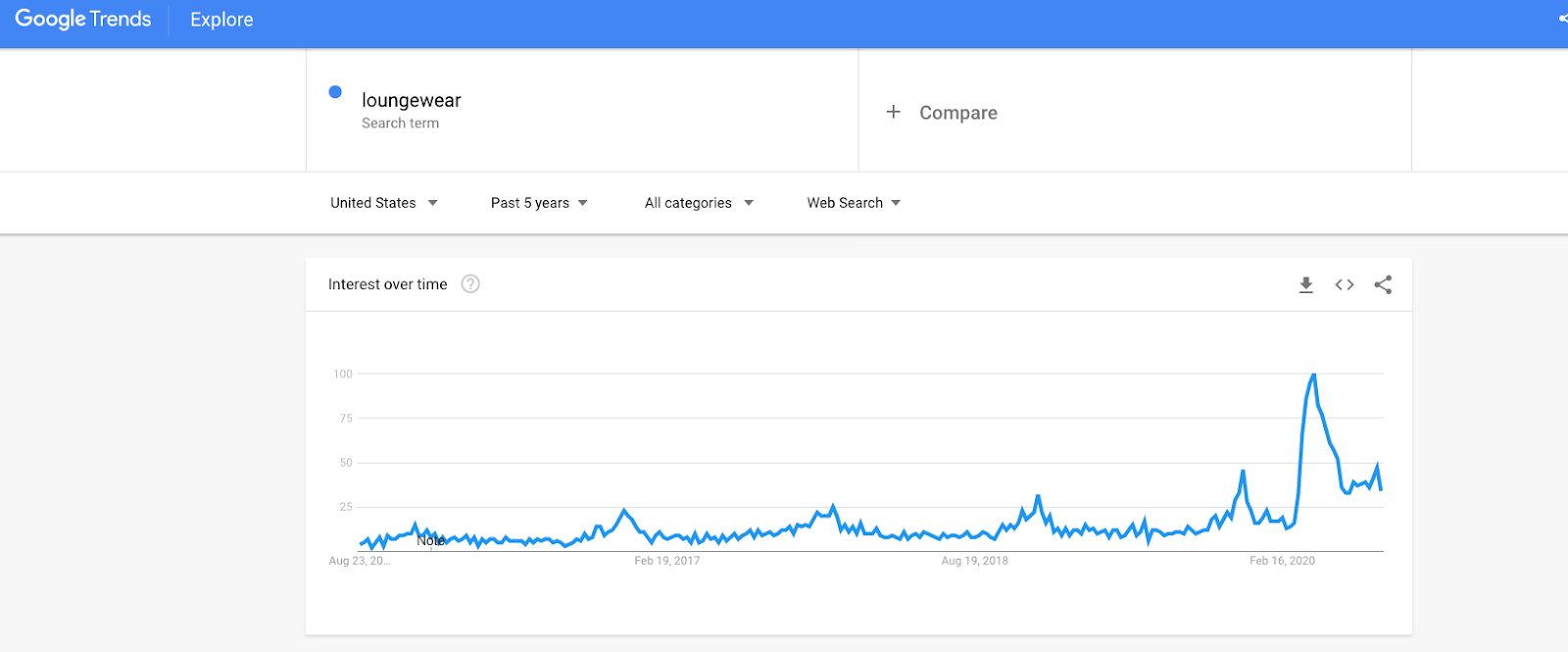
[Alt text: Google Trends chart of the keyword “loungewear,” which shows relatively steady numbers until a sharp increase in March 2020.]
Even if you’re not in the apparel business, you can employ this strategy by scanning your product catalog for any lesser-promoted products that could be more relevant in the current climate.
If you can’t find any, consider tweaking your messaging.
Craft messaging for the moment
If your typical brand messaging no longer makes sense given the change in your customers’ lifestyles, you need to update the language you’re using to communicate with them. It doesn’t do your users any good to pretend that we’re not in the middle of a pandemic.
Right now, messaging like “Look good for summer concerts, vacays, and nights out!” just makes me sad. Don’t remind your users that they can’t do those things right now.
Again, your messaging doesn’t have to be doom and gloom, but make sure it fits: “Look good for backyard hangouts, virtual happy hours, and Sunday drives!” is much more appropriate, and positions your product as relevant even in an upside-down world.
Replace in-person experiences with virtual try-ons
Businesses that employ a “try in-person, buy online” model are facing a unique challenge. How do you encourage customers to purchase something, like an engagement ring, without seeing it first in person? Though some users are growing more comfortable with a fully online experience, others still prefer to interact with a salesperson or stylist for this type of purchase.
Creating a virtual try-on experience can be useful in at least partially replacing that in-person component, and can be achieved with dedicated customer service and/or development resources.
Anna Sheffield, a fine jewelry designer, offers live virtual appointments that are prominently featured on their site. This service offers customers a personal touch, and gets them connected with a brand representative who can help encourage a confident purchase without leaving the house.

[Alt text: A screenshot of Anna Sheffield’s virtual appointment information, detailing how users can set up a consultation with a stylist.]
Brilliant Earth, another company that sells wedding rings, uses a tool that allows users to virtually try on rings from home. No additional customer service time required.

[Alt text: A screenshot of Brilliant Earth’s instructions for how to use their virtual engagement ring try on tool.]
Offer buy-now-pay-later
E-commerce sites have more options than ever to extend payment plans to their customers. Afterpay, Affirm, and Klarna are all popular extensions that allow you to offer credit to your customers easily and securely.
For users feeling nervous about buying something that they don’t strictly need during a recession, this could be the difference that causes them to convert.
Summing it up
Change in consumer demand is a challenge that all businesses face, and now more than ever (see what I did there), it’s important for e-commerce SEOs to be responsive to these changes. Although none of us could have predicted what 2020 had in store, we can assess how the market has responded to our products and act accordingly.
What pivots have you or your clients made in e-commerce business models this year? Let me know in the comments!
Sign up for The Moz Top 10, a semimonthly mailer updating you on the top ten hottest pieces of SEO news, tips, and rad links uncovered by the Moz team. Think of it as your exclusive digest of stuff you don’t have time to hunt down but want to read!
Marketing Strategies
The B2B content that can help your sales team close
30-second summary:
- The driving force behind many B2B marketing initiatives is content creation, but all content is not equal. Some content types are better for closing the deal than others.
- Tying content to specific stages of the buying cycle has been shown to increase B2B buyer engagement and lead to more deals.
- B2B buying groups spend most of their time researching new solutions independently. They use content to help facilitate this process. By creating content that matches different needs on the buying cycle, B2B marketers can help guide buyers in their increasingly self-guided buying process.
- Marketers who understand the job inherent in the buying funnel are in a better position to create content that helps buyers complete them.
B2B marketing teams are juggling a million balls, with responsibilities that include driving demand gen and awareness through outbound marketing, creating compelling messaging for their company’s unique audience (not to mention defining that audience), and—above all else—producing sales qualified opportunities that close.
The driving force behind many of these marketing initiatives is content, with one survey of nearly 700 B2B marketers listing the top 3 content marketing priorities as:
- Improving quality/conversion of audiences
- Improving content distribution/promotion
- Focusing on content quality/quantity
Source: Marketing Charts
All content is not equal, particularly when it comes to lead nurturing and the B2B buying funnel.
Certain content types are more conducive to generating actual deals versus generating leads (even qualified leads).
Content that’s developed with the bottom of the funnel in mind works better at the decision level for buying teams. Tying content to specific stages of the buying cycle has been shown to increase B2B buyer engagement and lead to more deals.
Isabelle Papoulias, CMO at Mediafly, a sales enablement platform, writes, “Generally, B2B content should first create a positive predisposition and consideration for your brand, and later help accelerate the prospect along the path to purchase when they choose to buy. However, the buyer’s journey has become a self-guided journey, meaning by the time a prospect seeks to engage with a sales rep, they’ve already conducted a large majority of their research, narrowing down options before having conversations with sales.”
Let’s unpack that a bit.
The B2B buyer’s journey is becoming self-guided
B2B buying is dominated by buying groups whose time is divided across five main buying activities, according to Gartner. The following chart shows how buyers’ time is spent:
 Source: Gartner
Source: Gartner
Roughly 45% of the buying group’s time is spent researching solutions independently, either offline or online. Another 38% of time is spent meeting internally and doing…other stuff, while only 17% of time is spent meeting with potential suppliers.
What this means is that the buying group is researching your solution on their own and reviewing their research internally before they ever reach out to you.
However, it may be a misnomer to say that the B2B buying process is self-guided if you’re producing the right content. Remember, the content you produce has the potential to guide buyers (or not). It all hinges on the type of content you produce and how it’s tied to the overall B2B buying funnel.
Let’s look at that funnel then, shall we?
There is no funnel
Gartner has deconstructed the traditional B2B buying journey, turning it into a list of jobs that a buying team must complete prior to purchasing a new product or solution.
Marketers who understand these jobs, are in a better position to create content that helps buyers complete them.
It’s easy to visualize the above buying jobs as a buying funnel. I’ll even do it for you:
While it’s simple to put the buying jobs into a funnel, the reality is that the B2B buying process itself is not linear.
The journey may always start with identifying a problem (or a need) and end with consensus, meaning everyone on the team agrees about what to purchase.
But the reality, according to Gartner, looks more like this:
This buying journey, when laid out end to end, looks like a maze, rather than a funnel, with buying jobs circling back on each other as more information is collected and team members move from problem identification to supplier selection.
The thing that’s tying it all together is content.
Targeting content to buying stages leads to more deals
So, what kind of content helps convert “good” marketing leads to sales qualified opportunities that close?
I’m glad you asked.
For their 2020 B2B Content Marketing Benchmarks Report, The Content Marketing Institute (CMI) asked B2B marketers which content types were the highest performing for their organization based on where buyers are in the buying journey.
Top-of-funnel content including lead generation content types included things like blog posts and short articles, social media posts, in-person events (remember those?) and e-books.
Mid-funnel content included many of the same types of content, with Email newsletters thrown in there for good measure, perhaps because emails are more product/solution specific rather than focused on identifying a problem and/or branding (e.g., “our product exists to help solve your problem.”)
Content that was best for converting leads to deals was not the easy stuff–you won’t see blog posts in this list. Conversion-focused content includes in-person events (sigh), case studies, and webinars/online events (whew).
Here’s what the CMI’s results look like in their version of the buying cycle:
 Source: Content Marketing Institute
Source: Content Marketing Institute
And here’s what it looks like mapped to Gartner’s “buying jobs” funnel:
Create late-stage content
The CMI survey revealed that half of the content created by B2B marketers in the past 12 months was “top-of-funnel” content and another 22% was mid-funnel content (which is very similar to top-of-funnel content).
Only 14% of content produced by B2B marketers was late-stage or end-of-funnel content. That is, case studies, webinars, and online or offline events.
There are a couple of lessons to be learned here.
First, you can stand out from your competitors simply by producing content for every stage of the funnel. Also, you will gain a competitive advantage if you produce more mid-to-late stage content, the kind of content that creates deals.
An added bonus? Your sales team will love you.
Mediafly’s Papoulias concurs. She writes, “Companies need to think through what types of content are needed for various stages of the buyer journey and target accordingly. Content like infographics, white papers, or e-books educate on the issues the solution solves and provides buyers the answers to the questions they are likely typing into search engines like “how-to” or “what is.”
“On the other hand, case studies provide buyers with the third-party validation necessary to get deals across the finish line. With proper lead nurturing supported by the right content every step of the way, companies will strengthen the relationship with the prospect ultimately closing deals and driving revenue.”
The post The B2B content that can help your sales team close appeared first on ClickZ.
Marketing Strategies
Top 15 Chrome extensions for social media marketers
30-second summary:
- When it comes to the internet browser, Google Chrome, with its extensive list of extensions is the indisputable chart-topper.
- As a digital marketer, you have to keep track of so many things – different projects at various stages of development, research, reporting, new leads, existing clients, et cetera.
- Bhavik Soni shares a list of the top 15 Chrome extensions that will make social media marketers more productive, smart, and efficient.
- These are categorized into extensions for - Productivity, research and tracking, content creation and implementation, and digital marketing. Dive in!
When it comes to the internet browser, Google Chrome, with its extensive list of extensions is the indisputable chart-topper. From simple theme-based to technical coding-related, the extension list in chrome is practically endless.
This extension-packed list also boasts a wide variety of efficient social media extensions that boost professionalism, punctuality, and productivity. And, who wouldn’t love a convenient free plugin that makes life easier!
As a digital marketer, you have to keep track of so many things – different projects at various stages of development, research, reporting, new leads, existing clients, et cetera. These extension apps create a focus-orientated and organized work environment by keeping marketers updated on project developments, sending to-do reminders, enhancing content, and more.
In short, these install-and-use plugins act as the ace up their sleeves for social network marketers. They work as useful gadgets and trained assistants. They are the must-have social media marketing tools for every marketer.
You can optimize and make Google work for you in a jiffy by adding these 15 Chrome Extensions to your browser today.
Chrome Productivity Extensions
1. StayFocused: App block & website block google chrome extension
Designed to boost productivity, the StayFocused extension limits the amount of time you spend on vanity Googling. It offers the brute force you need somedays to anchor your focus to what’s more important.
Pricing:
Free
2. Momentum: Personal dashboard new tab chrome extension
Perhaps, Momentum is the best Chrome extension for productivity. It steers your focus from idle to important by motivating you with quotes, encouraging positivity with mantras, and inspiring with serene photography. Features like Daily Focus, To-Do, Countdowns, Metrics, Event Reminder and Links help you browse the internet with intent. What’s more? The plus version is available for just $3.33/month.
Pricing
$3.33/month
Research and tracking extensions
3. Diigo Web Collector: Highlighter and bookmarker for chrome
Diigo is a research chrome extension that lets you highlight important phrases, bookmark and save pages, write notes, and collect references at a single place. It comes in handy for social media marketers, who generally invest hours in R&D for planning a campaign, learning trends, and comparing the competitor’s strategy.
Pricing:
Free
4. Google Analytics URL Builder: Online UTM tracking
This is a tracking extension that lets you build UTM parameters. With the help of this plugin, you will be able to gauge the effectiveness of the UTM tags used in the campaigns. Google Analytics URL Builder also allows you to share templates with others, saves time when you have to generate URLs manually, and shares progress with clients.
Pricing:
Free
5. Ghostery: Makes web cleaner, faster, and safer
Ghostery is designed to block ads and trackers, this productivity chrome extension makes a great social media marketing tool. With its help, you will be able to learn the trackers on the competitor’s sites that they use to attract, engage, and convert the visitors.
Pricing
$11.99 USD /month/user*
6. SpyFu: SEO and PPC tools for professionals
Yet another efficient tracker extension that lets you peek into the competitor’s site data. Spyfu reveals extensive information, including where the competitor appeared on Google in the past nine years. The social media marketing (SMM) plugin also shows all keywords bought on AdWords, every ad variation, and every organic rank for $33/month.
Pricing
$33/month
Content creation and implementation
7. Canva: Design is all around us
How social media advertising will perform relies a lot on visuals. Photo-driven platforms like Instagram and Pinterest yield better ROI than content-driven Twitter or Facebook. It is because photos get more engagement. To ensure you can make most of this social media trend, creating impressive and attention-grabbing posts become imperative. It is where Canva comes into the picture.
Pricing
Free
8. Figure it Out: Solve your time zone pain
A digital marketer works for clients and target audiences in different time zones. For them, Figure it Out proves to be a handy tool. It is an extension that lets you keep track of up to 10 time zones, and makes scheduling posts accordingly.
Pricing
Free and paid ($3/month)
9. WhatFont: Identify fonts on web pages
We get it, fonts are tricky. Download an app, and it gives you hundreds of fonts that are too similar-looking, too familiar, or too quirky for your campaign. One day you browse a site – may be a competitor’s – and find just the font you were looking for but have no clue which one it is.
That’s when WhatFont comes to the rescue. A single click and it reveals not only the name but also the family, style, weight, size, line height, and color of the font.
Pricing
Free
10. Unsplash Instant: Beautiful photos in your new tab
For every social media marketing post, there is a tedious task to find high-quality, professional stock pictures, usually for free. Unsplash Instant lets you find great photos ranging from flowers and skies to desktops and artsy portraits. You can save them for free and use it for all kinds of commercial use.
Pricing
Free
11. Colorzilla: Advanced colorful goodies
Colorzilla allows you to hover over any color shown on a webpage and learn about its hex code for future use in a social media ad post. With this plugin, you will be able to create consistent color themes, appealing visuals, and come up with perfect palettes.
Pricing
Free
12. Sniply: Drive conversion through content
Social media promotions through third-party content are more effective when they include a tempting call-to-action that takes the reader to your own online space. Sniply helps you make those conversion-generating posts by letting you add custom CTA to any piece of content. On the dashboard, the plugin will show how many clicks your links are getting and the level of engagement for tracking purposes.
Pricing
$29/month
Digital marketing extensions
13. IFTTT for Marketing and social media automation
IFTTT free digital marketing extension syncs multiple apps and automates them, thus saving a lot of time and effort. In simple terms, you could post a pic on a dozen different platforms all at once.
Pricing
Free
14. Buffer: Share content easily
With this social media extension, you will be able to schedule and manage posts across different platforms. Buffer will also let you follow up with analytics to track the performance of each post.
Pricing
$85/mo
15. LastPass: Free password manager
By downloading the LastPass Chrome extension, you will not need to remember dozens of passwords to each social media platform. This free password manager will do it for you. You could also create a master password through LastPass.
Pricing
Free
Let’s sum it up
Here’s a guide to 15 best Chrome extensions available for social media marketers. From saving bookmarks to managing posts and passwords, these plugins will work as assistants to digital professionals.
Note: Details like pricing are subject to change as per the respective tool provider.
Bhavik Soni is a Creative Writer at Auto Monkey. We provide an original analysis of the latest happenings in the social media industry. Connect with Latest Social Media Trends and News plus tips on Twitter, Facebook, and other social tools on the web.
The post Top 15 Chrome extensions for social media marketers appeared first on Search Engine Watch.
Marketing Strategies
HubSpot Sales Hub: 10 "certified dope" tricks for succeeding
You don’t need me to tell you — there’s a lot of pressure on sales teams right now to perform. You’ve got to hit your numbers.
But I’m here to tell you that hitting your numbers isn’t just about your tactics and your process, it’s about using your technology to be more efficient, more productive, and more data-driven.
I’ve had the pleasure of working with sales teams across all kinds of industries who are using HubSpot in all kinds of crazy ways.
One of my favorite parts of my job (helping people own HubSpot at their organization) is the almost constant opportunity to get creative with the platform to solve for the evolving needs of varying individuals and teams.
Over the last several years of nerd-ing out on HubSpot, and working with a whole team of HubSpot geeks, I’ve collected all kinds of little gold nuggets for using the platform, and today I’m giving you my top 10 for the Sales Hub.
Some of these may seem random, but that’s part of the fun, right?! When you’re working in the platform day in and day out, you come across little random things that make a big improvement in your workflow or in collecting great data.
I get it, you’re busy. I purposefully made this easy to skim through, so you can quickly find ones that will make the biggest difference for you!
I encourage you to read (and watch) through this with your HubSpot portal open, ready to try some of these yourself as you go!
1. Not sure which deals are stuck in a deal stage?
The problem: If your company has a high volume of deals being juggled at one time by multiple reps, it can be a lot of work to stay on top of where every deal is at all the time. Many sales managers want to see what deals have been stuck in different deal stages for a certain amount of time, but there is currently no out-of-the-box report for stuck deals in HubSpot.
If you’ve tried to solve this problem before, you’ve likely found the calculated deal property called “Time in Stage [Deal Stage Name]” and gotten all excited, only to find out that this property only calculates when a deal has moved out of that stage, rendering it useless for this purpose.
If this kind of reporting is important to your team, we’ve got just the hack for you!
The hack: While you can’t use the Time in Stage properties for your stuck deal reporting, you can use the hidden reporting property “Entered Stage Date” to hack a stuck deal report together for each of your individual deal stages.
Wondering what I mean by “hidden reporting property?” Check out number 2!
Check out how to do it here:
The dopeness: What I love about these reports is that they both help give reps visibility to make sure they’re giving attention to older or stalled deals, and they help the team keep the pipeline squeaky clean. Many times when these reports are created, reps jump in and say “oh yeah those deals are lost I just didn’t move them.” Great! Clean ‘em up.
Keeping your pipeline clean? That’s certified dope.
Note: there are much more complicated ways to do this with custom properties and workflows that could give you a single report to look at stuck deals. However, they tend to be much more finicky and, in my opinion, aren’t really worth it.
2. Speaking of hidden reporting properties… have you heard of ‘em?
The problem: If you read the hack above and thought, Heyyyy how come I didn’t know about these? You’re not alone.
The trick: There is a set of properties that you’ll only see in the custom report builder. (Don’t worry, HubSpot’s not really hiding them, they’re listed under Deals Calculated Information in the list of default deal properties.) Not many people are geeky enough to be scrolling through HubSpot’s list of default deal properties (but apparently I am!), so they’re often missed.
Here are the six calculated deal properties that are available to you for creating custom reports according to HubSpot:
“These properties are used only as measures or filters when building a custom report and will not appear in your properties settings or on individual deal records.
- Deal status: groups your deals into won, lost, or open (includes all other stages) and can be used when building a custom report to show you a count of deals in each stage type.
- Closed amount: the amount value for deals marked as “closed won”. This can be used as a filter when building a custom report.
- Days to close: the time between create date and close date. This can be used as a filter when building a custom report.
- Deal stage probability: the win probability set in deal stage settings for a deal’s stage. This can be used as a filter when building a custom report.
- Forecast amount: the amount multiplied by the win probability of a deal’s stage. This can be used as a filter when building a custom report.
- Time in stage [deal stage name]: calculated for a deal after it leaves a given stage. This is not calculated for a deal’s current stage. This can be used as a filter when building a custom report.”
The dopeness: there is a cascade of dopeness that can come from knowing about these properties, but here’s the skinny: in order to get the most out of Sales Hub, you need to leverage all of the data that HubSpot collects for you throughout your sales process.
All of these properties make it easy to create custom reports that show you how your team is performing and help you find areas for improvement.
Transparent reporting on all of your deal data? That’s certified dope.
3. Do you know objectively why your team loses the most deals?
The problem: You’re winning and losing deals all the time, but do you know why you’re losing the deals you are? I’m not talking about the gut-check answer based on how you’re feeling right now. I’m talking about objectively through your HubSpot data.
Most people don’t. Many teams do fill out the default closed lost reason property, but there’s a problem — that property is an open single-line text field. What’s the problem? There’s no standardization of that data, which means it would take you hours to pull all of the closed lost reasons that every rep typed in and aggregate them into a useful report.
The tip: there is an amazingly easy fix for this that can lead to significant insight into where your sales process may be broken or at least not functioning as well as it should be. The easy fix is… change the closed lost reason property to a dropdown field!
Or better yet, leave the default closed lost reason property as it is, and change it to “closed lost reason explained” — this can then be used for adding more detail to context to the new property you’re going to create: closed lost reason. This one will be a dropdown field with set options that you choose (ie budget, competitor, timing).
Check out how to do it here:
The dopeness: this simple change allows you to collect information that, while sometimes difficult to see, will take the guesswork out of why your team is really losing deals. You may be surprised by which reasons show up at the top of the list.
What’s more, when you’re creating closed lost reason reports from this property, you can break the report down by properties like individual sales rep, deal type, or product interest so you can look for different trends.
Being able to use your closed lost data to actually win more deals? That’s certified dope.
4. Have trouble using HubSpot for forecasting because the deal stage probabilities aren’t flexible enough?
The problem: HubSpot’s forecasting is a great tool, but only if the win probabilities you’ve set for each of your deal stages are perfectly accurate. The problem is, in real life, there are often lots of different factors for determining a deal’s likelihood to close beyond just the stage that a deal is in.
When this is the case, looking at HubSpot’s forecasting reports can be frustrating because you know they’re not showing what you really think will close.
The hack: At IMPACT, we’ve hacked our HubSpot portal so that our reps can update a win by close date probability dropdown field in increments from 0-100% based on a variety of factors we’ve internally decided upon.
We then use calculation properties and workflows to calculate our own forecast numbers that we can then create custom reports off of.
Check out how we do it here: (This one’s a bit involved!)
The dopeness: Sometimes, we’ve got deals we know are going to move fast, so even if it’s in an earlier deal stage we can set the win by close date probability to be high. While this certainly takes trustworthy reps to ensure they’re using this property properly, it’s given us the ability to do much more accurate forecasting.
Plus, you’ll find out pretty quickly if people are using it well based on how much more accurate your forecasting becomes —and you can keep tweaking how your reps are using your custom property so it just gets better and better.
More accurate forecasting in HubSpot? That is for sure certified dope!
5. How do you know the win probability percentages you’ve set in your pipeline are legit?
The problem: Everyone wants to do accurate forecasting, but it often ends up being driven by a lot of gut feelings and guessing. You set your win probability percentages (either with the method mentioned in #4, or with your win probabilities set in your deal settings), but when you get to the end of every month your forecast is way off.
Or maybe you’re just getting into your portal and you have no idea what win probabilities you should be setting up.
The hack: Lucky for you, I work with some really smart people. One of them is Jess Palmeri, HubSpot certified trainer and lover of HubSpot tricks.
Jess came up with a hack for validating the win probability percentages you’re using with custom funnel reports that I absolutely love.
I’ll let her show you exactly how to do it:
The dopeness: you may not need the flexibility in setting probabilities for every deal like what we showed in #4, but if you want to get accurate forecasting in HubSpot this is a big step to getting there!
Even more accurate forecasting in HubSpot? Even certified doper! (okay I realized that one is a stretch but I couldn’t help myself…)
Speaking of forecasting, I have another certified dope friend who’s presenting on just the thing at HubSpot Training Day in October!
6. Do you have to manually let people know when deals are moving through your pipeline or when/how other deal-related activities are happening?
The problem: How much time do you spend updating other people when your deals are moving along, or even notifying others on your team when you’re doing certain activities in HubSpot?
If you’re a manager, how much time do you spend looking through your reps’ pipelines to see if deals have been updated or moved along?
While you can use @ mentions when logging individual activities (meaning a call, email, meeting, or note on a contact record), many people eventually end up saying some version of this: “When I do this one thing in HubSpot, I want this person and that person to know.”
The tip: HubSpot’s Workflows automation tool has a handy little set of actions called “Internal Communication”. This allows you to set up customized notifications for when almost anything happens in your portal (think: properties are updated, deals move stages, etc.).
Here’s a quick example of what you could do with this:
The dopeness: I love how customized and specific these internal notification workflows can get. You can certainly send bulk notifications to entire teams, but you can also create workflows that are super-specific to an individual person’s role and what they need to stay on top of.
Staying on top of what’s going on without using extra time manually updating people and getting updated? That’s certified dope.
7. Are there things you have to update every time you move deals to certain stages?
The problem: throughout your different deal stages, you’re likely collecting information along the way that you have to input into the deal record. You may even require certain pieces of information before moving a deal along to the next stage.
But how do you make sure that is happening across the board?
The trick: Require stage property updates! This is another simple one that can make your data collection on deals exponentially easier.
In your pipeline settings, you can use the “Update Stage Properties” section to select what properties a user is prompted to update when they’re moving a deal to each different deal stage. You can also select which of those properties are required.
The dopeness: Let’s be honest — collecting and managing great data is hard. You don’t want to waste your time or energy doing data entry onto deals. But using the “Update Stage Properties” functionality to its fullest will make it quick and easy for your reps to add in deal information as well as keep information up to date.
Keeping a squeaky clean deal database? That’s certified dope!
8. How do you get lead intelligence on leads that haven’t come in through your website?
The Problem: when you have sales leads that come in through your website, you’ve got all of this lead intelligence on them because of your HubSpot tracking code. You can see what pages on your website they’ve viewed, what emails they opened, forms they’ve filled out, and more.
But what happens when a lead calls your office, emails you out of the blue, or connects with you on LinkedIn? How do you get all of that lead intelligence that you know and love?
The hack: use a HubSpot form to collect contextual information from the lead before your first meeting with them!
I discovered this hack completely by accident. A sales rep had created an email template to send to prospects before her first scheduled meeting with them. It looked like this:

This form was created simply to collect additional info from prospects to help the rep prepare for their first call — it has questions about why they’re reaching out, what their challenges are, and more.
In the back end, when any contact fills out a form on your website (no matter what the purpose of that form is), HubSpot is able to attach their browser cookies to their contact record.
This means that if a lead comes in through any non-form-fill method, using a pre-call questionnaire built in HubSpot will allow you to gather lead intelligence once they’ve filled out that form.
Note: it’s standard practice to use cookie consent banners on websites these days, and I’d recommend making sure you’re using one for this hack. If someone wants to opt out of us collecting lead intelligence data on their browsing, we should allow them to do so.
The dopeness: Doing something like this is a win-win. You’re collecting double the lead intelligence (both directly from the contact, and indirectly from their interactions with your website and marketing), which enables you to give your prospects the best possible buying experience.
Using data to give prospects an amazing buying experience? That’s certified dope.
9. Is there irrelevant information cluttering up your contact, company, and deal records?
The problem: if your company is using HubSpot for both sales and marketing (or customer service, or your website), you’re likely going to have a lot of users in there.
If you aren’t the one who set up your portal, you likely go to contact, company and deal records and end up seeing a bunch of information on the left and right-hand sidebars that is completely irrelevant to you.
No one wants to waste time combing through a bunch of irrelevant information to get to what they’re really looking for.
The Tip: Thankfully, you can not only customize your own record view in each different record type (contact, company, deal and ticket), but you can create custom record views for your entire team. This means the marketing team can have a completely different default view than the sales team.
The dopeness: You would be amazed at how much time someone can waste just looking for the information they need on a contact, company, or deal record.
Setting up customized record views is an easy way to make your CRM workflow smooth, while at the same time scaling that experience to the whole organization.
Making everyone’s life easier by seeing the information you need when you need it? That’s certified dope.
10. Ever have issues with making sure the right emails are getting logged and tracked?
The problem: HubSpot’s ability to automatically log your emails is great, except when you end up logging emails you didn’t mean to, like the one you sent your spouse with your grocery list, or the internal email you sent that now everyone in your HubSpot portal can see.
The tip: remember my friend Jess? Well, she also loves helping people fine-tune their email logging and tracking.
I’ll let her show you what I mean:
The dopeness: let me speak from experience: there is (pretty much) nothing worse than accidentally logging emails you didn’t mean to. Logging emails means HubSpot has potentially created contacts and therefore a data trail that you have to go back and delete.
Avoiding the pain and suffering of erroneously logged emails? That’s certified dope.
You too can be certified dope
At this point, you may be wondering: holy moly, Carina, there are so many great tips and tricks here, but what else do I need to know to be a certified dope HubSpot user??
I feel you. We all need a little help getting inspired to take our HubSpot usage to the next level sometimes.
That’s why we put together an event this October that I am so excited about. It’s called HubSpot Training Day and it’s for anyone who wants to one-up their HubSpotting.
And if you’re looking for more help becoming certified dope, reach out — we’d love to help.
-
 Business2 months ago
Business2 months agoBernice King, Ava DuVernay reflect on the legacy of John Lewis
-
World News2 months ago
Heavy rain threatens flood-weary Japan, Korean Peninsula
-
 Technology2 months ago
Technology2 months agoEverything New On Netflix This Weekend: July 25, 2020
-
Finance4 months ago
Will Equal Weighted Index Funds Outperform Their Benchmark Indexes?
-
Marketing Strategies9 months ago
Top 20 Workers’ Compensation Law Blogs & Websites To Follow in 2020
-
 World News8 months ago
World News8 months agoThe West Blames the Wuhan Coronavirus on China’s Love of Eating Wild Animals. The Truth Is More Complex
-
Economy11 months ago
Newsletter: Jobs, Consumers and Wages
-
 Finance9 months ago
Finance9 months ago$95 Grocery Budget + Weekly Menu Plan for 8

